This year I managed to make my autumn colours pilgrimage a little earlier than usual. I did this by visiting Westonbirt Arboretum at the end of October, rather than chancing it to the middle of November. I’m glad I did, as, according to our guide at the arboretum, this particular weekend was deemed to be one of the best.
I’m not sure how they tell which is the best weekend for visiting Westonbirt Arboretum, because all the trees must change at different rates. One acer’s crowning moment of glory could be a couple of weeks ahead of a neighbouring maple. However, it’s not up to me to question why. I was just delighted to be there, along with the thousands of others that had descended on this National Arboretum, near Tetbury in the Cotswolds.
Fortunately Westonbirt Arboretum spreads over 600 acres and is home to around 15,000 labelled specimens. That means there’s plenty to go round. And whilst a little patience may be required at times, for one to compose one’s own photograph – while waiting for another visitor to move along, with their selfie stick, striking a perfect pose under a tree – it is most definitely worth the wait.
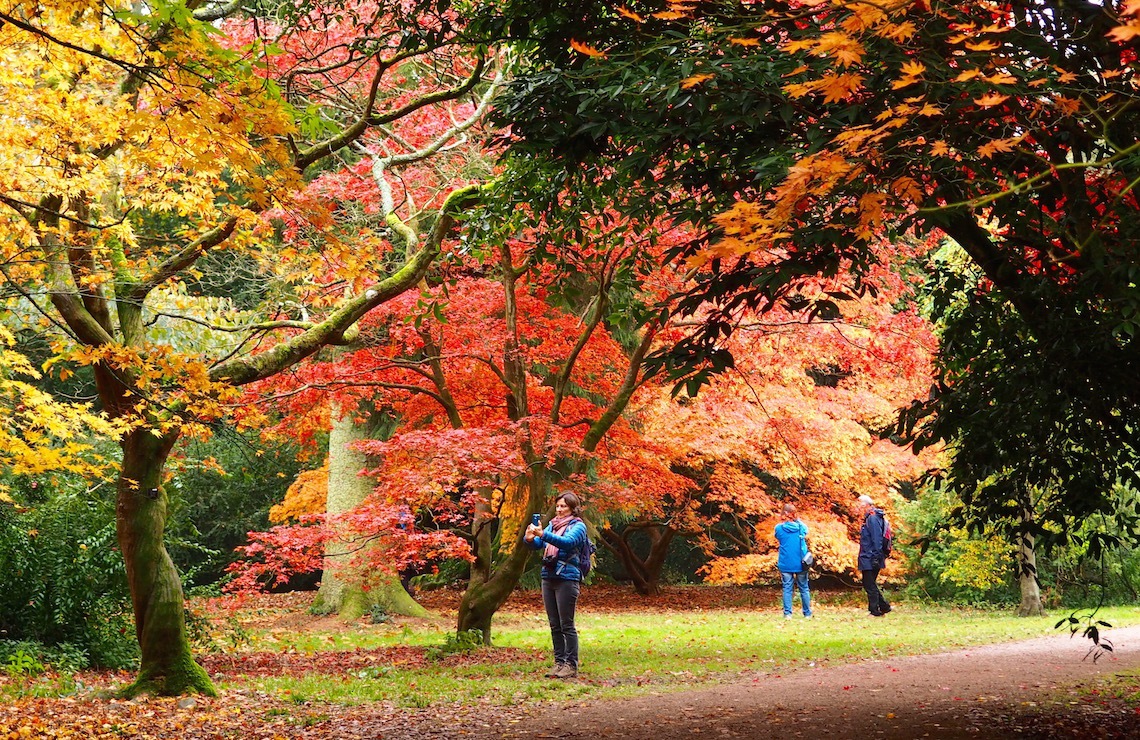
Since my last visit, a smart, high-tech ticket entry system has been installed, allowing for a smooth, steady stream of visitors into the grounds. Just by coincidence, I arrived at the same time as a guided tour was about to set off. I hadn’t embarked on one of these before while visiting Westonbirt Arboretum. One and a half hours sounded quite long, but I thought I’d give it a try.
The Old Arboretum
We made our way into the Old Arboretum. Our first task was to hug a Giant Redwood and shake the fallen cones, to release their seeds. The bark is soft and spongy, to protect these trees against forest fires. This may explain why, to propagate the seeds, they have to be scorched first.
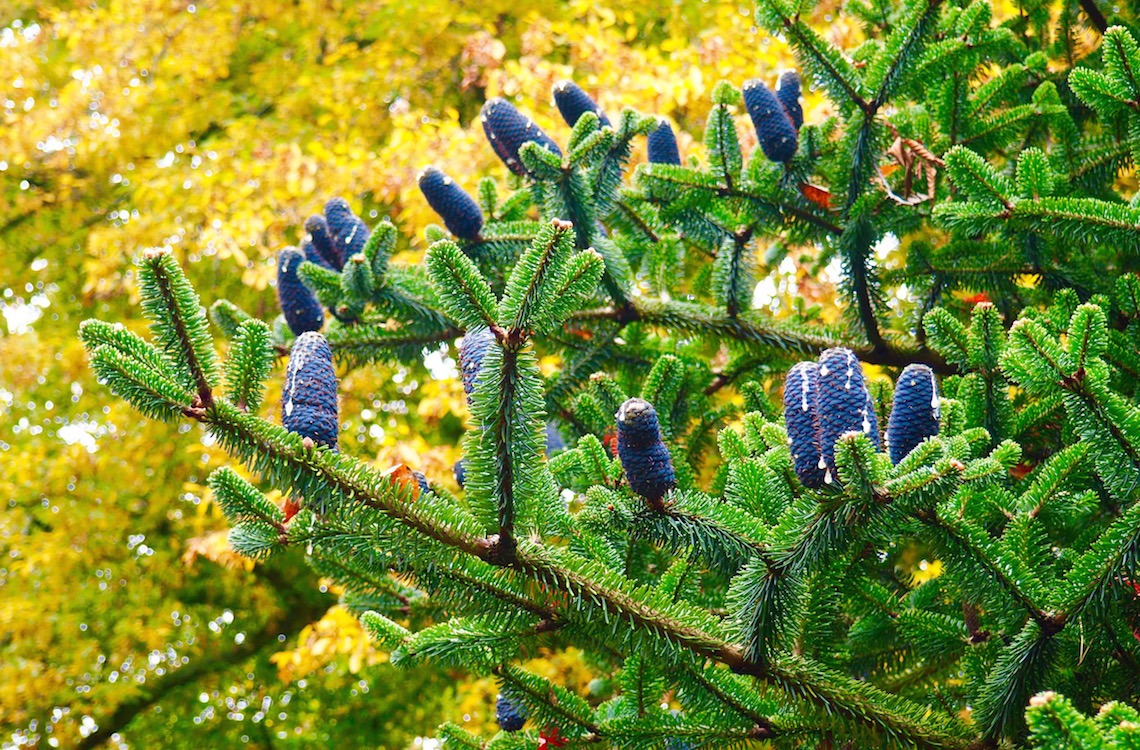
Wealthy estate owner, Robert Holford, created Westonbirt Arboretum during the Victorian era. He made his money supplying clean water to London. During this exciting time of plant hunting, Holford financed plant-hunting expeditions all over the world.
One such plant-hunter was David Douglas, from whom the Douglas fir gets its name. It turns out he lost his life in mysterious circumstances, in the mountains of Hawaii. It’s sad to realise he would never have seen what became of these magnificent trees, whose seeds he sent back to England.
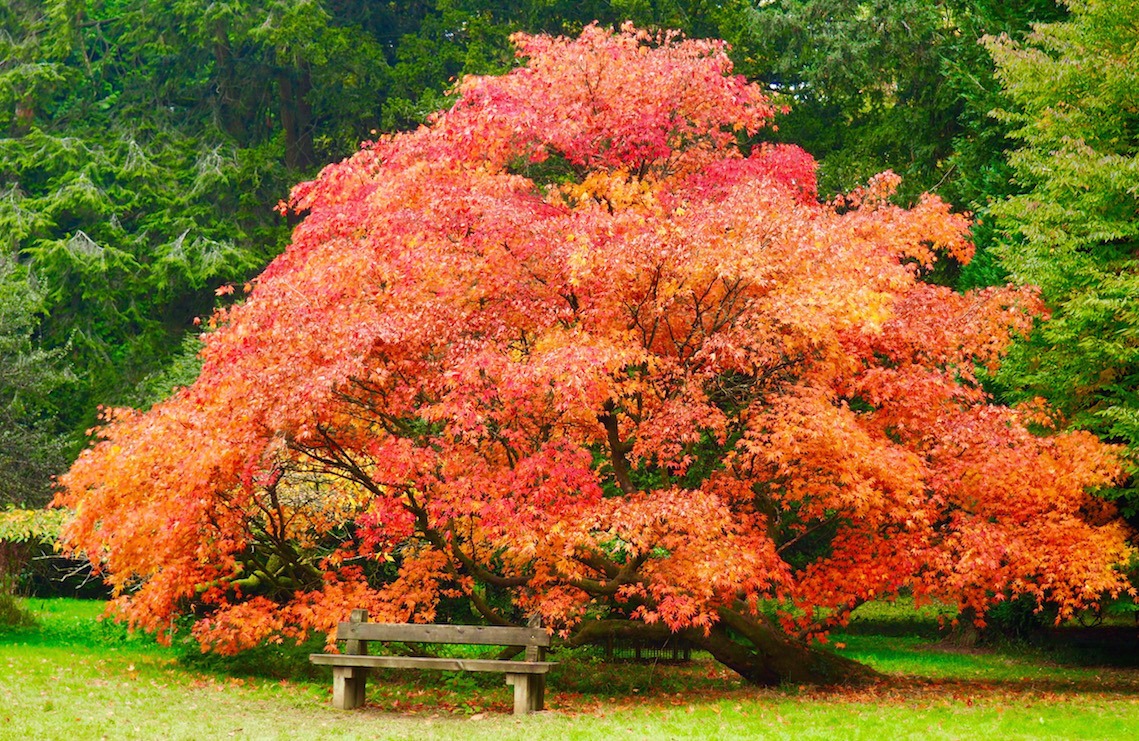
Robert Holford was responsible for laying out the ‘drives ‘ and ‘rides’, still seen today when visiting Westonbirt Arboretum. And in this Victorian heyday, I could imagine the family being driven along in carriages to enjoy picnics, laid by their servants under the trees.
I was interested to learn it was Robert Holford’s son George, who, at the age of only 15, was responsible for laying out the Acer Glade. At this time of year, thanks most definitely to George, these acers are exploding with colours of all shades, from pale pink to burnt orange.
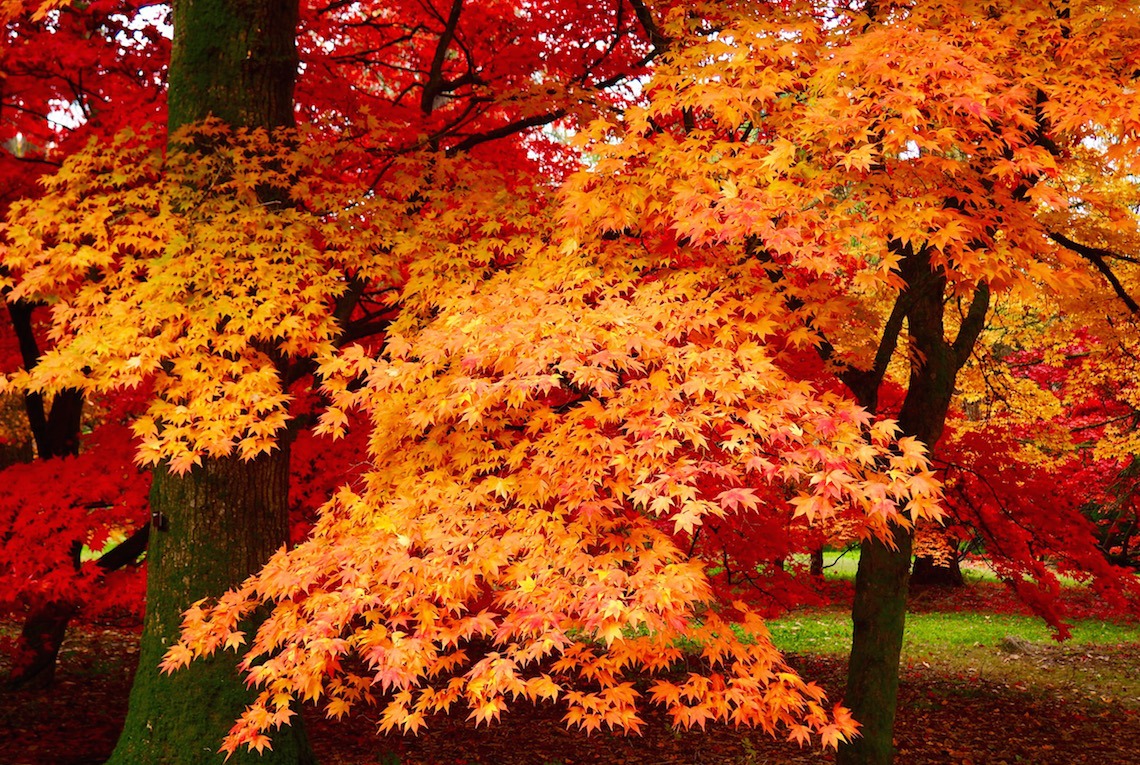
Our guide pulled some leaves out of his bag. He encouraged us to warm them in our hands. I took a bundle and inhaled. They smelt very sweet, like candy floss. It turns out these leaves are from the Katsura tree, also sometimes known as the candyfloss or burnt sugar tree.
Later in the day, I was caught unawares and engulfed in the fragrance of sweet burnt sugar. I caught sight of other visitors sniffing the air, and was quite smug in my knowledge that I knew there was a Katsura tree nearby.
The guided tour flew by and I was very glad I’d joined it, having learnt so much.
As our tour came to an end, we were offered a sneaky-peek into the propagation area. This is normally out of bounds. It was fascinating to hear about the care that goes into selecting seeds, how they are quarantined and then working out how best to propagate them.
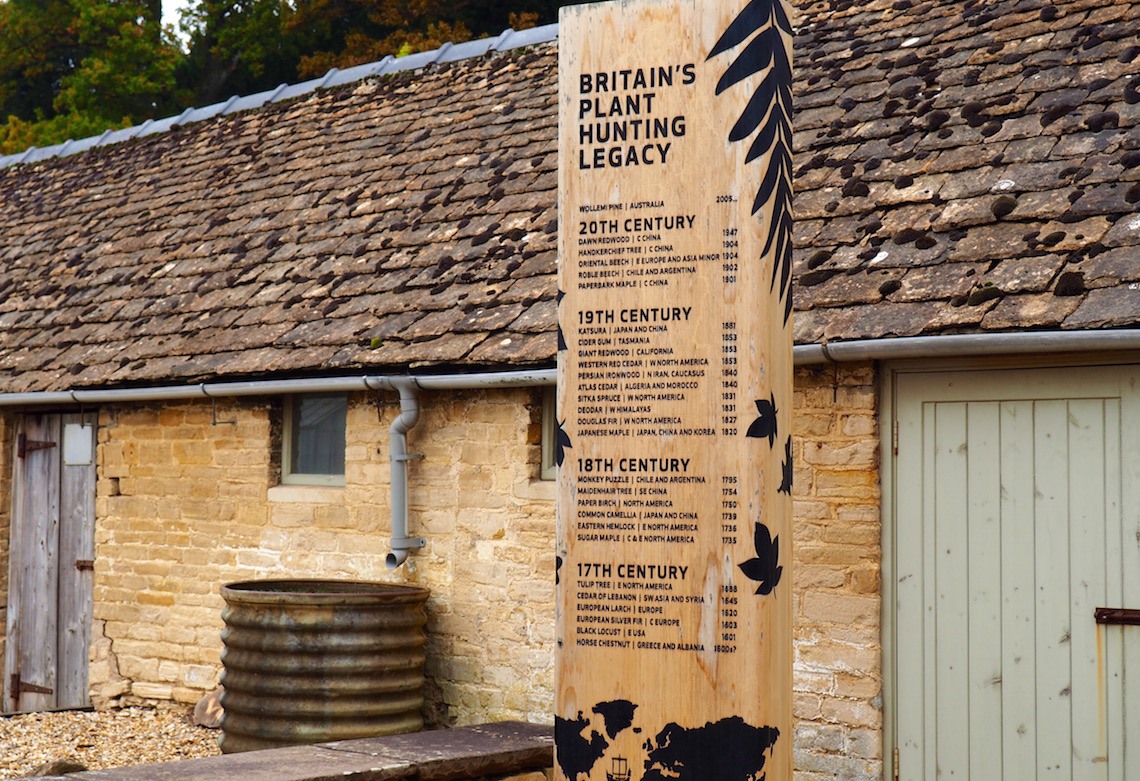
It was also interesting to hear that plant-hunting trips still continue. And in some ways, in this era of climate change, it’s even more important for the caretakers of Westonbirt, to find out which trees they will need to carry the arboretum into the future.
All this leaf hunting was hungry-work. Walking through the concessions and outdoor barbecue area (tempting), I settled on a very tasty mixed-bean chilli with cheese scone, in the outside area of the restaurant. There were a few happy-looking dogs enjoying a well-earned rest too. Dogs aren’t allowed into the Old Arboretum, but are permitted to enter the vast Silk Wood.
Treetop Walkway
While visiting Westonbirt Arboretum, I was looking forward to trying out their newest addition: the Treetop Walkway. Unlike the one at Kew Gardens, there are no steps or lifts needed to get up to it. It straddles a valley, so you can walk straight onto it and straight off at the other end, which is ideal for those with wheelchairs and pushchairs.
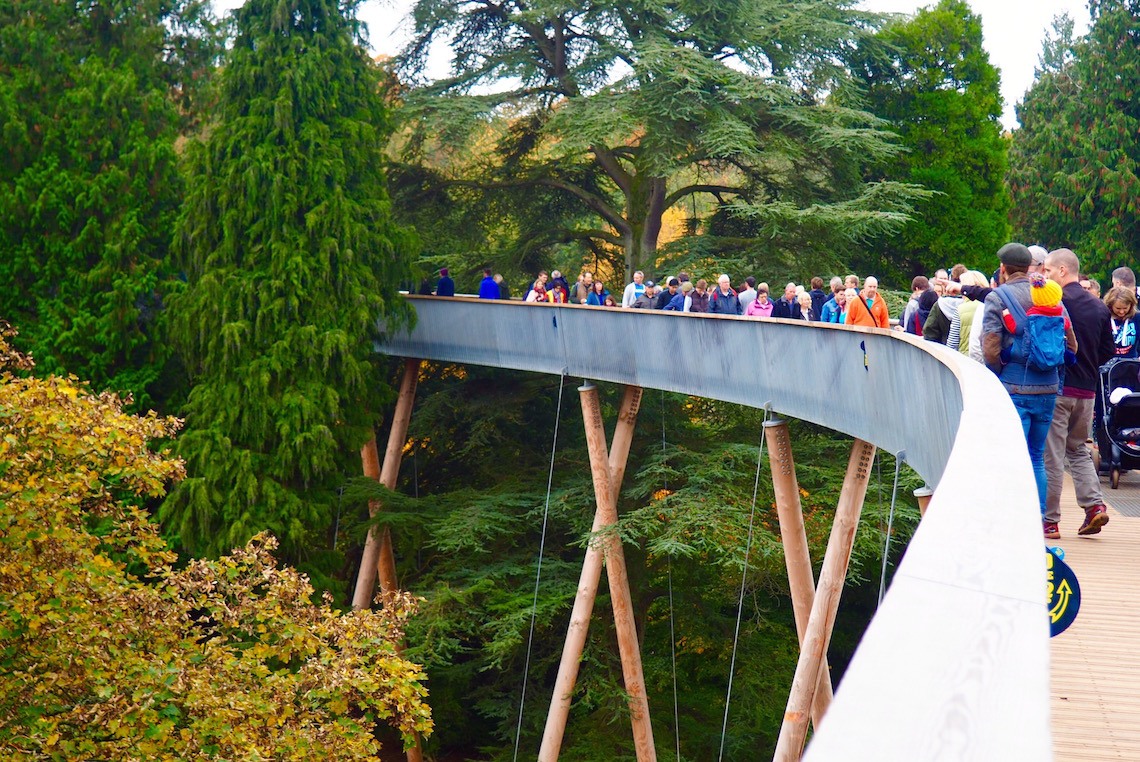
The walkway is a spectacular structure and winds 300m through the trees, 13m above ground level. There’s even a small crow’s nest, for an even higher bird’s eye view. It’s a great way of being able to observe the trees from above. As it was one of the busiest days of the year, it was packed with visitors. I’d love to try it again on a more peaceful occasion.
Silk Wood
I spent the rest of the afternoon following the seasonal trail through the Silk Wood, being wowed by the incredible Japanese maple collection.
It was George Holford who expanded the arboretum across the valley into Silk Wood. He planted new species amongst the existing ancient woodland. These included the exotic trees we see exploding with colour during autumn, as well as the rhododendrons which stun in spring.
Being the first day of GMT, dusk began to fall early. But this only served to enhance the vibrant leaves of the trees.
Who needs fireworks when you’ve got the autumn colours at Westonbirt?
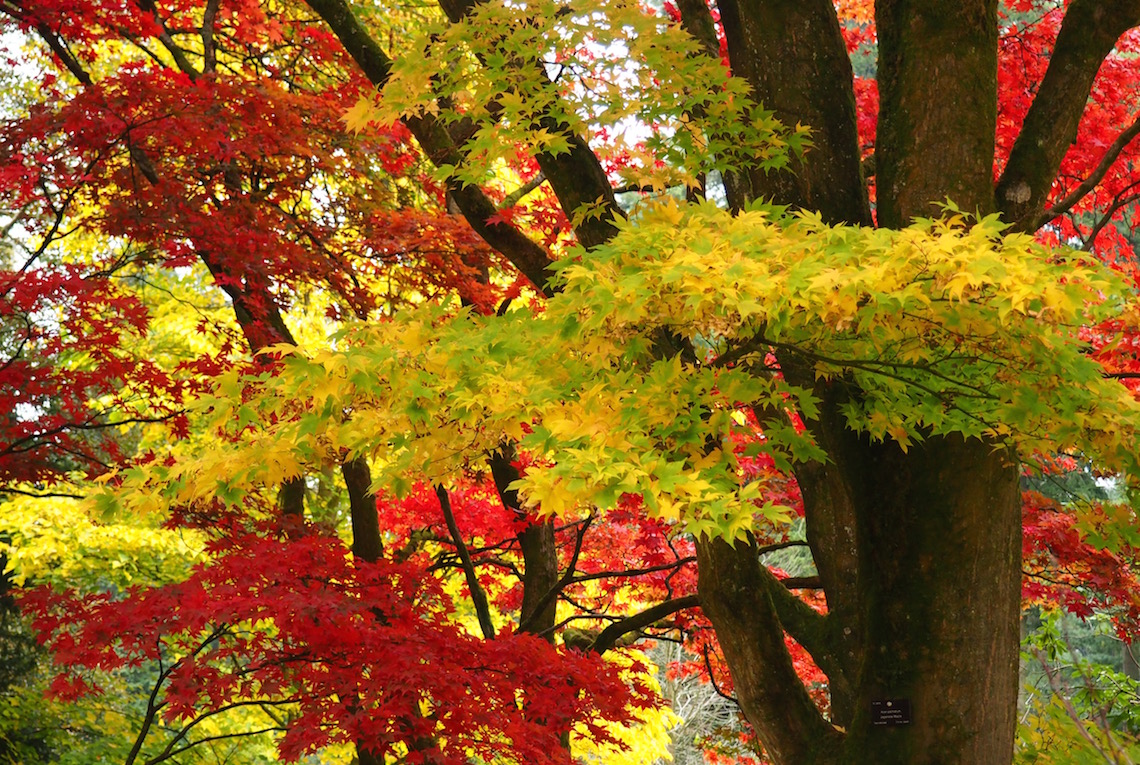
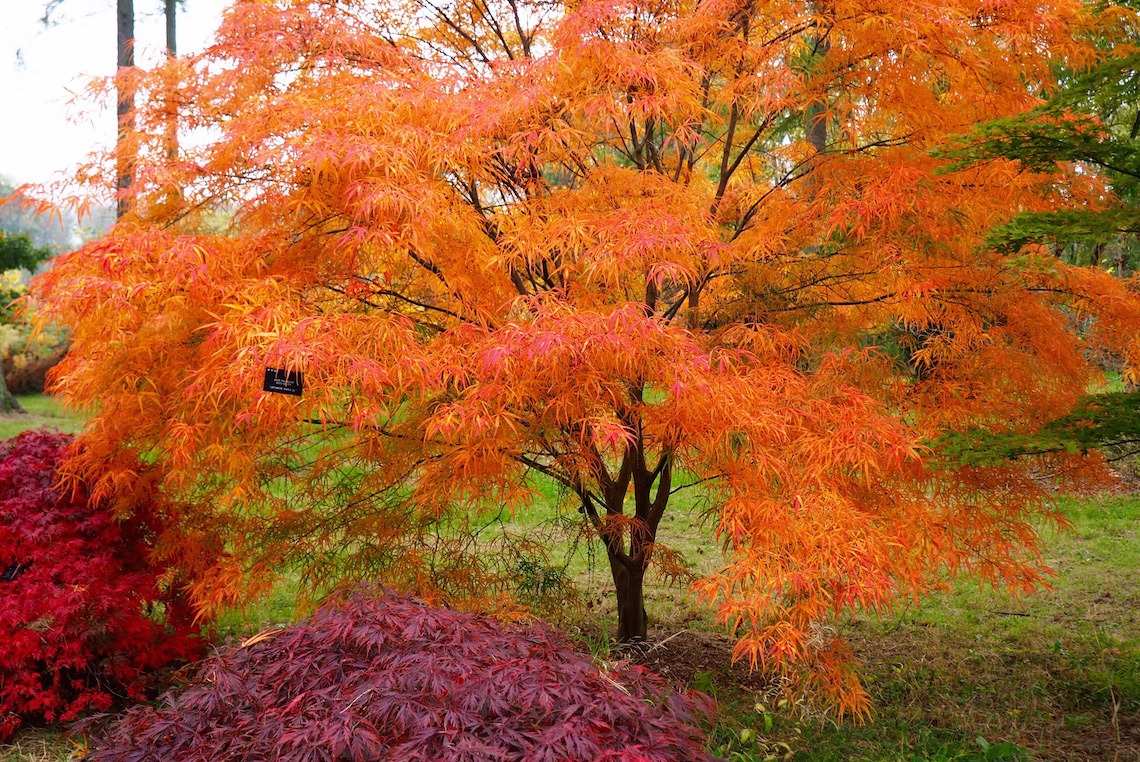
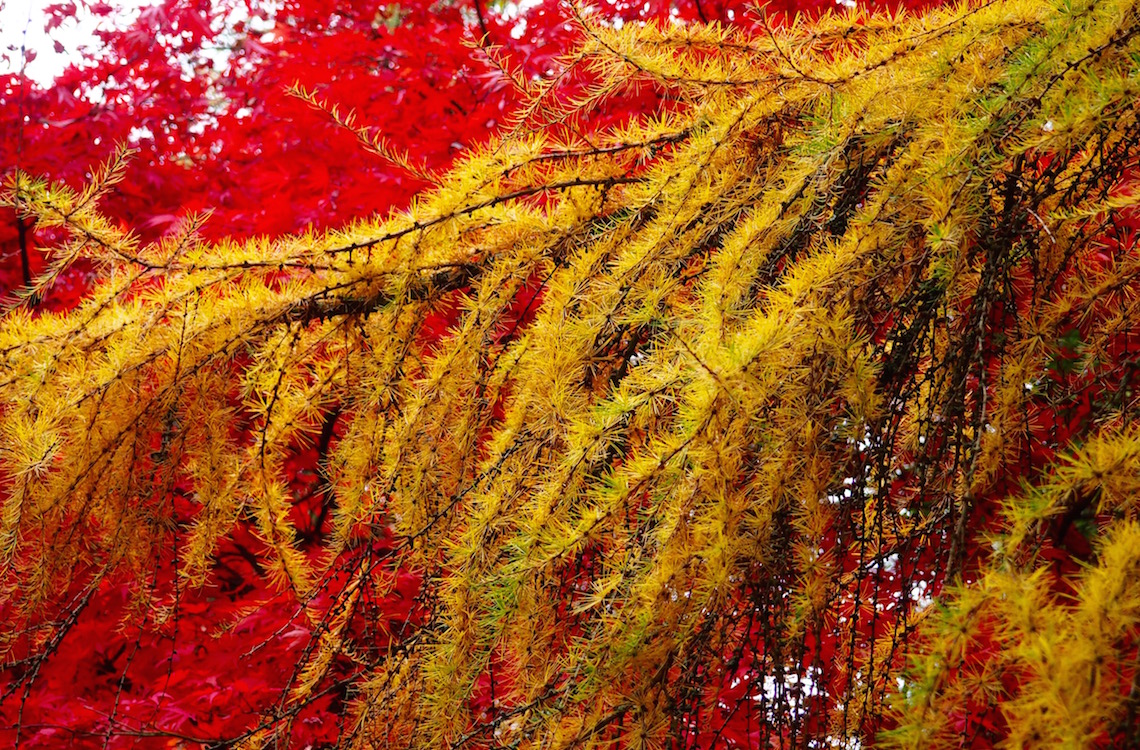
Where’s your favourite place for spotting autumn colours? I’d love to hear about it.

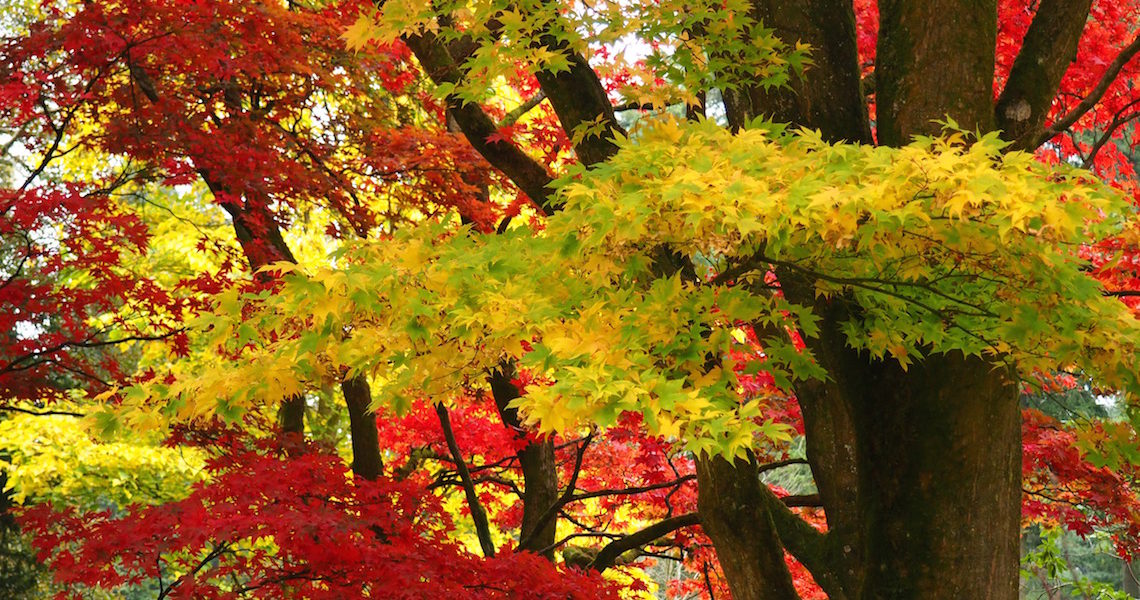
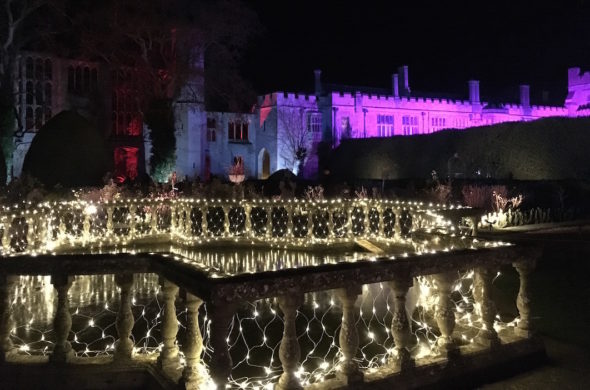
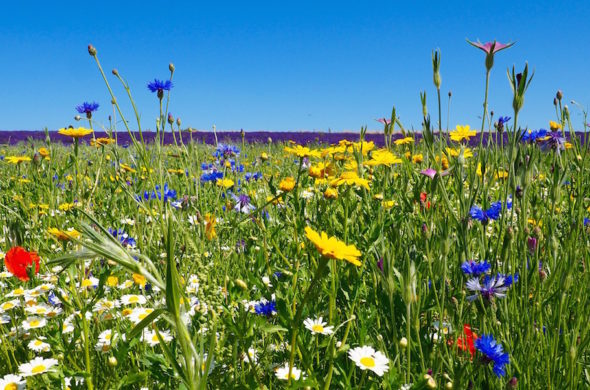
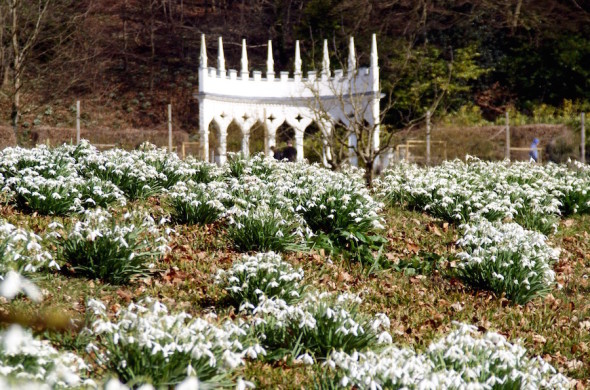
Anne @ TripMemos.com
November 6, 2016Amazing that you can get these colors in England!
Skylark
November 7, 2016Hi Anne. Thanks for reading my post. Yes, we are very lucky to have spectacular colours here!